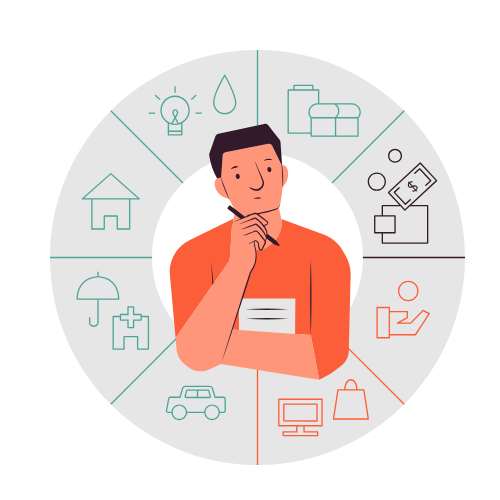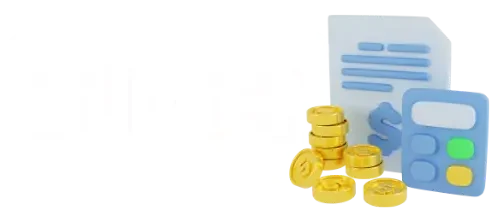I still have the spreadsheet saved on my computer. I called it “Budget – Final v2.” I opened it with so much enthusiasm, color-coding cells and creating fancy formulas. It lasted exactly nine days. The constant manual data entry, the receipts piling up on my desk… it was a chore. I realized that for a budget to work, it had to be easy, so easy that I barely had to think about it. That’s how I discovered my answer wasn’t a spreadsheet; it was learning how to use budgeting apps.

And let me tell you, it was a game-changer. It wasn’t about finding a magic bullet; it was about finding a system that did the hard work for me. If you’ve ever felt the same way, this guide is for you. Here’s a simple breakdown of how I went from financial stress to total control, all thanks to a little app on my phone.
How To Use Budgeting Apps.
Step 1: Picking My App (And What I Looked For)
Before I could even start, I had to choose an app. I was a little overwhelmed by all the options, so I narrowed it down to a few key things I needed.
- Ease of Use: If it was too complicated, I knew I’d give up. I wanted something with a clean interface that felt intuitive.
- Automatic Syncing: This was a deal-breaker. I was not going back to manual data entry. The app had to securely sync with all my bank accounts and credit cards.
- Cost: I started with free apps like Mint to see if I’d even use it. Once I was a pro, I was willing to consider a paid app like YNAB for more advanced features.
- Security: This was a big one. I made sure the app used bank-level encryption and had a solid reputation for protecting user data.
After trying a couple, I found the one that was the best fit for me. Your perfect app might be different, but focusing on these basics will help you find a great starting point.
Step 2: The Setup (The “Set It and Forget It” Part)
This is the part that takes a little bit of work upfront, but it’s what makes the magic happen.
- Get the App & Connect: First, I downloaded my chosen app. Then, I created an account and linked all my bank accounts, credit cards, and even my loans. I was a little nervous about this at first, but I realized it was completely secure and was a necessary step. Once it was connected, my entire financial life was visible in one place.
- Customize Your Categories: The app automatically categorized most of my spending, but I spent some time customizing it. I made categories that were more specific to my life, like “Date Night” instead of just “Dining Out,” or “Coffee” instead of just “Groceries.” This helped me see exactly where my money was going in a way that made sense to me.
Step 3: Making a Plan (Giving Every Dollar a Job)
Once my money was organized, it was time to create a budget. Based on my past spending data, I could see what a realistic budget was for me.
- Set Your Limits: I didn’t try to go from spending $400 on dining out to $50 overnight. I started with a realistic goal—maybe reducing my spending by 10% in a few categories. The app then tracked my spending in real-time, showing me a progress bar for each category.
- Use Alerts: I turned on notifications for bill due dates and overspending warnings. It was like a little financial guardian angel on my phone, giving me a heads-up before I made a bad decision. This, more than anything, made me feel in control.
Step 4: The Takeaway (And Mistakes to Avoid)
Using a budgeting app isn’t just about managing money; it’s about changing your habits. The visual data and real-time alerts made me more mindful of my spending. I started to make better choices without even thinking about it.
But I also made a few mistakes you can avoid:
- Not Linking All Accounts: I first only linked my checking account, which gave me an incomplete picture of my finances. Make sure everything is connected for a full view.
- Ignoring Alerts: It’s tempting to swipe away a notification, but those alerts are there to help you. Pay attention to them!
- Giving Up Too Soon: It takes time to get the hang of it. Your first month won’t be perfect. But if you stick with it and make small adjustments, it gets easier and more effective.
The Budgeting App I Choose
After looking at all the options and trying a couple of free apps to get my feet wet, I finally made my choice. The app I landed on and the one that ultimately taught me a new philosophy of money was YNAB, which stands for “You Need A Budget.”
I’ll be honest: I didn’t choose it because it was the simplest or the cheapest. In fact, it has a steep learning curve and a subscription fee.
But I chose it for one reason that stood out above all others: its core rule, “Give Every Dollar a Job.” This wasn’t just a feature; it was a total mindset shift. Most budgeting apps are about tracking where your money went. YNAB is about telling your money where it’s going before you even spend it.
Here’s how that changed everything for me. Instead of waiting for the end of the month to be surprised by my spending, every time I got a paycheck, I would open the app and assign every single dollar to a category. This money was for groceries.
This money was for rent. This was for my emergency fund. I even had a category called “Fun Money” and another for “Future Vacation.” This proactive approach forced me to be honest with myself about my priorities. I couldn’t just have money sitting in my checking account and assume I could afford a spontaneous dinner out.
I had to look at my budget and see if the “Dining Out” category had funds. If it didn’t, I had to deliberately take money from another category say, my “Fun Money” and move it over. This simple act made me pause and think, “Is this worth it?” The app was teaching me to be the intentional manager of my money.
Another reason I stuck with YNAB, despite the learning curve, was the incredible support. They have a whole library of free videos, podcasts, and articles that don’t just explain how to use the app but teach you the fundamentals of budgeting. I quickly realized that paying for the app wasn’t just paying for a tool; it was paying for a full-on financial education that was helping me build a skill for life.
Of course, YNAB isn’t for everyone. If you’re looking for a super hands-off, free solution, an app like PocketGuard or Mint might be a better fit.
But for me, the intentionality that YNAB demands was exactly what I needed. It forced me to face my financial reality head-on and gave me the tools to build a plan that truly worked. It didn’t just organize my expenses; it organized my goals and, most importantly, my peace of mind.
Conclusion
The real power of knowing how to use budgeting apps is that it automates the boring parts of my financial life so I could focus on the fun parts like setting aside money for a big trip or finally starting to invest. So if you’re still wrestling with spreadsheets or feeling stressed about your finances, trust me. It’s the easiest, most effective way to take back control.
Please subscribe Easy Budget to stay updated about our latest blogs!


1 thought on “How to Use Budgeting Apps: A Simple System for a Stress-Free Financial Life 2025”